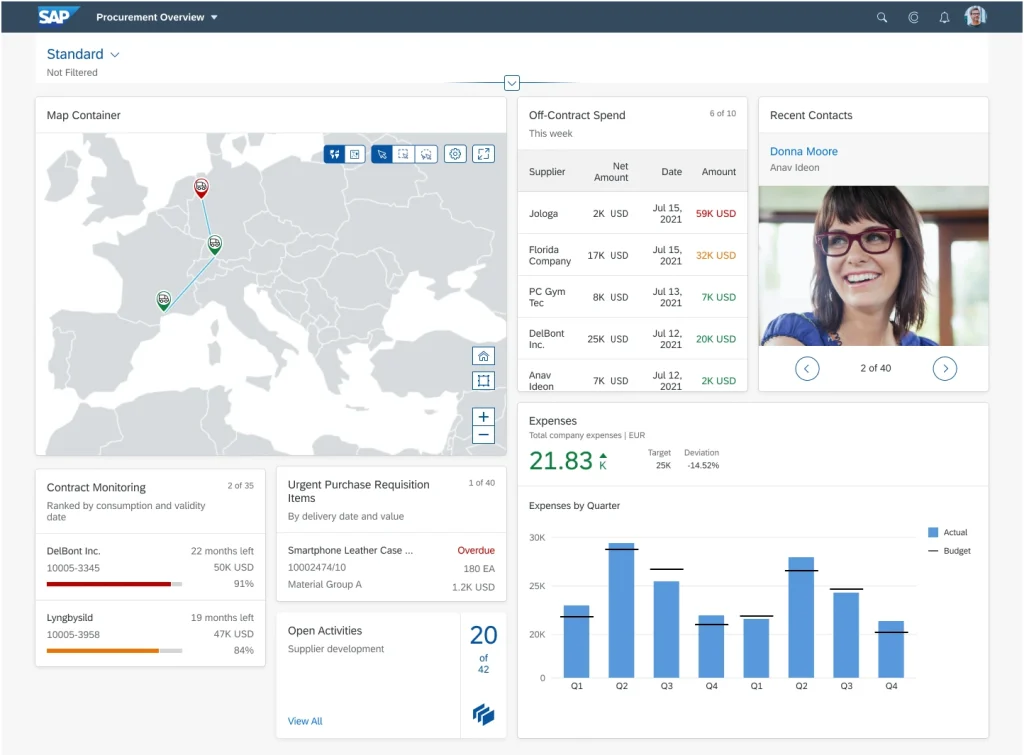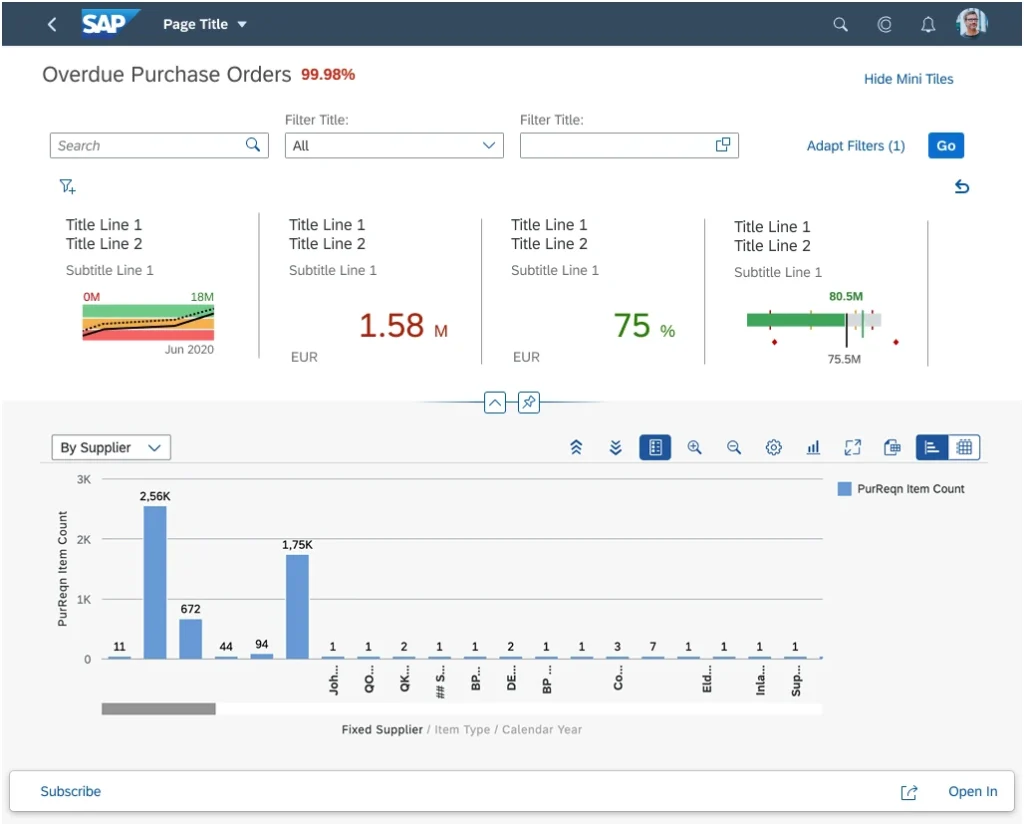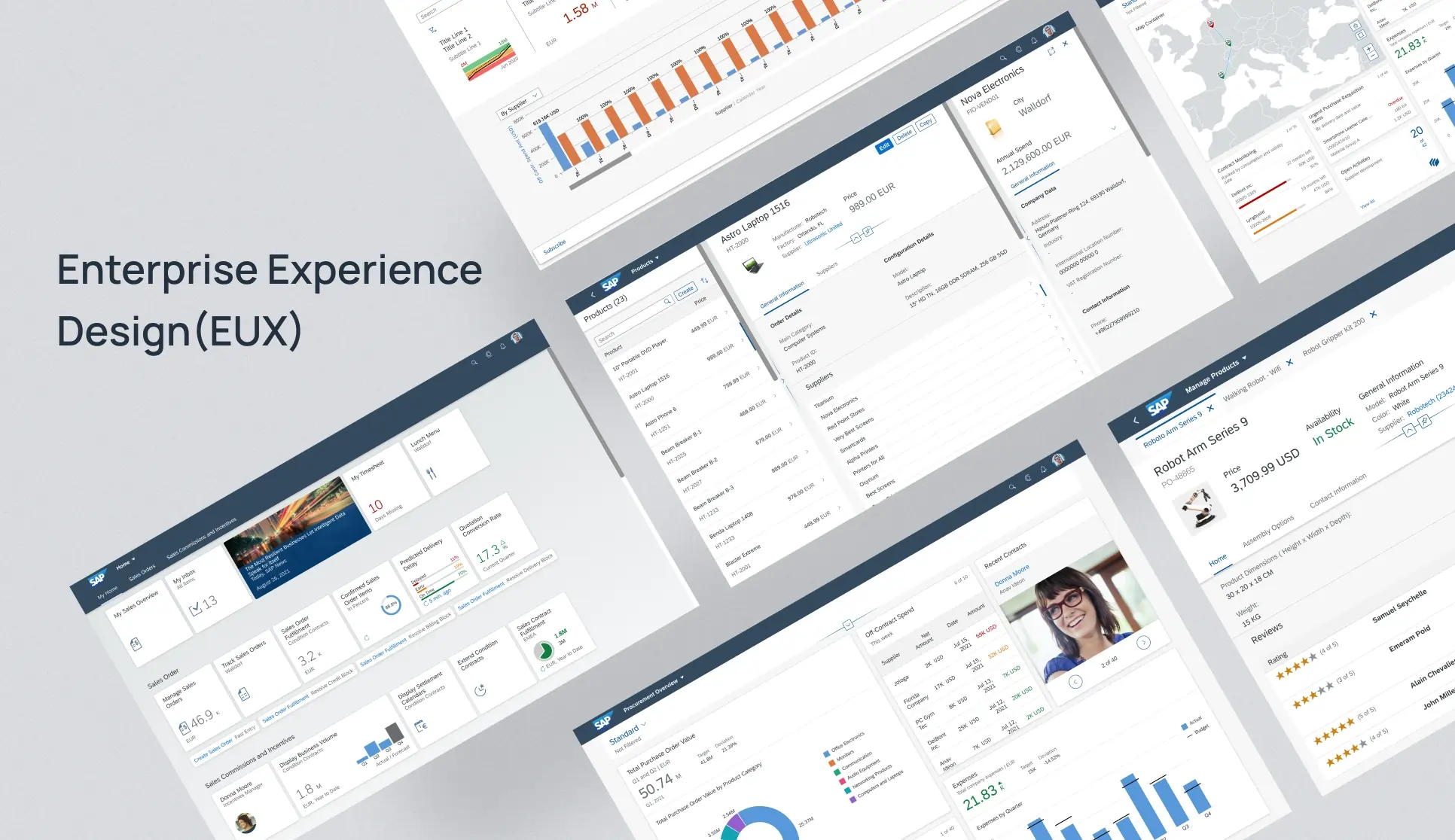Most designers eventually become pretty familiar with UX, but Enterprise UX? Not so much. Why is that? Let’s dive into it in this article.
You know — crafting intuitive, efficient, sometimes even delightful experiences.
You build something people love to use. It’s satisfying.
But there’s another world out there.
Quieter.
Messier.
And — if you ask me — maybe even more critical.
Enterprise User Experience = EUX
And if UX is like curating a perfect little coffee shop experience,
EUX is building an entire airport terminal — one where thousands of people need to get where they’re going… without losing their minds.
At a glance, the difference seems obvious:
- UX solves for delight.
- EUX solves for depth, scale, and productivity.
But the more you work in EUX, the more you realize — it’s not just bigger.
It’s different.
When you’re designing for enterprises, you’re planning for systems.
Networks.
Teams of people, sometimes hundreds or thousands of them, all depending on tools like CRM platforms, ERP systems, HR software, internal dashboards — the kind of stuff that isn’t glamorous but keeps entire businesses running.
And unlike consumer UX, your users?
They don’t have a choice.
Not All UX Is Glamorous — And That’s Exactly Why EUX Matters So Much
They can’t just delete the app and move on if they’re frustrated.
If you’re stuck with a terrible inventory management dashboard, you’re… well, stuck.
Eight hours a day. Five days a week.
Maybe for years.
That’s the emotional layer that makes EUX feel different.
Bad design doesn’t just annoy people — it wears them down.
It quietly drains morale.
It adds invisible weight to every workday.
Which means when you get EUX right?
You’re not just saving clicks or speeding up load times.
You’re giving people back time, sanity, and maybe even a little bit of joy they thought they had to sacrifice to their jobs.
But wow — it’s not easy.

I’m on a mission to help teams work smarter through better design.
If you’re curious about partnering on Exterprise Experience Design (EUX) projects, reach out — let’s make it happen.
You’re often dropped into environments where the “system of record” is… a 20-year-old database no one fully understands.
You have to balance real human needs against stiff regulatory policies.
You’re stitching together processes that were never designed to work together, across departments that barely even talk to each other.
And you’re designing not for individuals, but for webs of people.
Marketing wants one thing.
Sales wants something else.
Operations is screaming about compliance.
And somehow, your design has to make all of them happy—or at least, functional.
There’s also the quiet war against resistance to change.
Even if your new design is a hundred times better, people might still resent it.
Because learning something new is hard.
Because the old broken system, frustrating as it was, felt safe.
This is why EUX demands a different kind of creativity.
It’s not about beautiful animations or flashy interfaces.
It’s about clarity.
Forgiveness.
Resilience.
You’re trying to make complexity feel understandable — not dumbed down, but navigable.
You’re helping people work through chaos without even realizing how chaotic it is underneath.
And the funny thing is:
When you succeed, no one throws a party.
There’s no big splashy launch day most of the time.
No one tweets excitedly about the new HR compliance tool.
Your biggest win is often… silence.
Things work.
Departments move faster.
That endless back-and-forth frustration starts to disappear quietly.
That’s the invisible good of EUX.
It’s not sexy.
It doesn’t rack up clout on Dribbble or Behance.
But it might just save someone hours of wasted time every week.
It might stop a team from burning out.
It might help a whole company move forward a little faster and wiser.
And honestly?
That’s the kind of design that feels like it matters.
Maybe EUX isn’t where you chase cool.
Maybe it’s where you chase real impact.
And maybe—that’s the most rewarding design work you’ll ever do.
🔵 Examples of Typical Enterprise UX Products
Enterprise UX (EUX) isn’t about designing the next viral social media app or shopping website.

Instead, it’s about creating the essential tools that organizations run on — the kind of products that rarely get public attention but make a massive impact internally.
Typical EUX products include:
- CRM Platforms (like Salesforce, HubSpot CRM) — helping sales and customer service teams track leads, conversations, and pipelines.
- ERP Systems (like SAP, Oracle, NetSuite) — coordinating supply chain, finance, HR, and inventory management across the business.
- HR Software (like Workday, BambooHR) — managing hiring, onboarding, payroll, compliance, and employee engagement.
- Internal Dashboards — tools used for monitoring KPIs, operational metrics, project statuses, or real-time analytics inside an organization.
- Compliance and Regulatory Tools — systems that ensure organizations follow necessary laws and policies (think banking, healthcare, or government sectors).
- IT Service Management Platforms (like ServiceNow) — streamlining IT support, ticketing, and issue resolution for internal teams.
- Procurement Systems — software used to manage buying, supplier relationships, and purchase approvals.
In short, if an organization must function, but is rarely seen or praised outside the company, there’s a good chance it’s EUX.
🔵 Challenges Unique to Enterprise UX
Designing for enterprises isn’t just about making tools “usable.”

It’s about navigating a minefield of competing priorities, outdated systems, and internal politics. Some key challenges unique to EUX:
- Balancing User Needs and Business Goals:
Users want simplicity and speed.
The business may require complex data collection, security checks, or audit trails, which can make the experience heavier. Good EUX must satisfy both, without alienating either side. - Bureaucratic and Regulatory Constraints:
Especially in industries like finance, healthcare, or government, designs must comply with strict regulations, such as HIPAA, GDPR, and SOX. Creativity has to work within tight rules — you can’t “move fast and break things” here. - Change Management Resistance:
Even significant improvements can face pushback.
Employees may resist using a new system because they fear losing efficiency, expertise, or simply because change is uncomfortable.
EUX often requires building trust and offering soft landings. - Partial or Inaccurate Data:
Designers often have to work with legacy systems where the data is messy, inconsistent, or incomplete.
This forces designs to be flexible, fault-tolerant, and forgiving of edge cases. - Longer Decision Cycles:
Unlike startups that pivot quickly, enterprises involve multiple stakeholders — including legal, compliance, IT, security, and management — which slows down approvals and implementation.
EUX isn’t just about what users want; it’s about what’s possible within real-world constraints.
🔵 Why Enterprise UX Design Still Needs Creativity
At first glance, EUX might seem… dry.
No fancy visual experiments, no viral animations, no “wow” moments.
But actually, EUX demands a different, deeper kind of creativity:
- Simplifying Complexity:
You’re taking systems with 50+ data fields and workflows that span departments — and making them feel natural, understandable, maybe even easy. - Designing for Unknowns:
Because of messy legacy systems or future integrations, EUX designs must be flexible — planning for uncertainty is, in itself, a creative act. - Building for Resilience:
Enterprise users make mistakes under pressure. Creative EUX design builds systems that help users recover gracefully rather than punishing errors. - Mapping Invisible Journeys:
Unlike consumer UX, where you can track a buyer’s journey from start to finish, enterprise workflows are often non-linear.
Designers must creatively anticipate multiple entry points, interruptions, and detours.
In EUX, creativity isn’t about flashiness.
It’s about building structures where clarity, forgiveness, and adaptability quietly support real human work.
🔵 Emotional Payoff of Enterprise UX
EUX’s success is subtle, but the emotional impact is real and powerful.
When you design enterprise systems well:
- You reduce burnout by minimizing frustration and wasted effort.
- You restore autonomy — employees feel more in control of their work.
- You improve morale, making everyday tools feel less like obstacles and more like allies.
- You make invisible wins happen — like a 5-minute task that used to take 30.
It’s hard to overstate how soul-draining bad internal systems can be.
People don’t always notice good design consciously, but they feel it when their workday becomes smoother, when they no longer need endless workarounds.
In a way, you’re not just making better software.
You’re making better work lives.
🔵 How Designing for Teams vs. Individuals Changes Everything
In traditional UX, you’re often designing for a single user moving through a flow.
But in EUX, you’re designing for interconnected teams, and that changes everything.
- Multiple User Roles:
You have managers, team leads, frontline workers, and executives — all of whom need different levels of access, dashboards, and priorities. - Hand-offs Across Users:
A task might start with a sales representative, pass to the finance team, and then be reviewed by the legal team. Your design must support smooth, traceable transitions between people and departments. - Shared Accountability:
Actions by one user, such as approving a purchase order, can have ripple effects on other teams.
Mistakes are magnified, so clarity at every step becomes critical. - Negotiating Conflicts:
Different teams have different workflows, incentives, and definitions of “success.”
A sales team might want speed; a legal team might prioritize thoroughness. Good EUX mediates between competing interests.
EUX isn’t about optimizing a solo journey.
It’s about orchestrating collaborative systems where everyone can succeed without stepping on each other’s toes.
🔵 The “Invisible Good” Concept
One of the strangest truths about EUX work?
If you do it perfectly, people barely notice.
- The system works.
- The workflows feel natural.
- Users don’t stop and say “Wow!” — they get their jobs done.
This is called delivering invisible goods.
Success often looks like nothing happened — no angry emails, no endless support tickets, no massive re-training efforts.
Just smooth operations.
It can feel weird at first because there’s no dramatic “wow” moment like in flashy app launches.
But invisible good is powerful:
- It’s quiet stability.
- It’s compounding trust.
- It’s long-term efficiency that becomes the foundation of bigger business wins.
As a SaaS Product designer, you have to reframe your sense of reward.
Not from applause, but from the absence of friction.
✍️ End Note Paragraph:
Enterprise UX might not be the flashiest corner of the design world, but it’s one of the most impactful.
It demands a different mindset — one that values clarity over flash, depth over trends, and long-term trust over short-term excitement.
When we design for enterprises, we’re not just building products; we’re shaping the way real people work, collaborate, and succeed every day.
It’s slow, often invisible work, but it’s the kind that leaves lasting footprints inside organizations.
If you’re looking for a design challenge that genuinely matters, EUX is where you’ll find it.
Loved this perspective?
I’m passionate about solving complex EUX challenges. If your organization needs real impact, I’m here to help.
